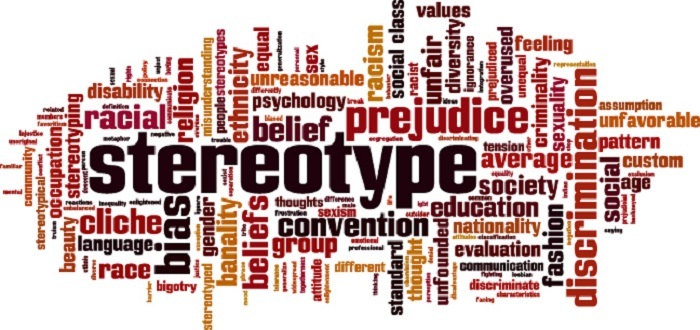
 Data Structure
Data Structure Networking
Networking RDBMS
RDBMS Operating System
Operating System Java
Java MS Excel
MS Excel iOS
iOS HTML
HTML CSS
CSS Android
Android Python
Python C Programming
C Programming C++
C++ C#
C# MongoDB
MongoDB MySQL
MySQL Javascript
Javascript PHP
PHP
- Selected Reading
- UPSC IAS Exams Notes
- Developer's Best Practices
- Questions and Answers
- Effective Resume Writing
- HR Interview Questions
- Computer Glossary
- Who is Who
Short Conclusions That Individuals Use in Making a Judgment About Others
We generally make assumptions when coming to any conclusions regarding the behavior of any person. In short, we can say that we use a dozen shortcuts when coming to any conclusions about others. These techniques have their pros and cons.

The merit of these techniques is that they enable us to form rapid perceptions about others and provide valid proof for those predictions. However, they are not fully accurate. They have certain discrepancies because they are not fully proven. They sometimes get us into trouble. So let us learn about these shortcuts so that we can get rid of the distortions resulting from their applications
The main shortcuts which people use while making a judgment about others are listed below
Selective perception ? Any attribute about any person, an object, or an event that makes it different from others increases the rate of our perception. It is because we, as humans, can take into account only certain stimuli. It is impossible to absorb and assimilate everything that we see. For example, when a boss scolds some employees but not others who are doing the same thing, this is a case of selective perception. Or the other example is that we see every other car or bike as our own.
Suppose we collect several people who have different modes of employment. Maybe some are banking personnel, some are engineers, and some are doctors, and we ask them to write about the major ways of increasing national wealth. Maybe the bank personnel say that banks are a major way, or a doctor says healthcare industries are a major way.
It is because we cannot assimilate all that we see through our naked bard eyes. We do not choose the attributes of others randomly; rather, we select according to our interests, background, experience, and attitudes.
Halo effect ? When we generate a common impression about any person based on a single characteristic about the person, such as intelligence, personality, or appearance, a halo effect starts generating. For example, if you are an admirer of Narendra Modi, try listening to ten things you dislike about him, or if you are a critic, try listening to ten things you admire about him. No matter what group you belong to, this would not be an easy exercise. That's the halo effect; our general view hides our specific ones as they contaminate them.
Contrast effect ? A common saying among actors is that you should never follow an act that has kids or animals in it. because people love animals and children so much that you will look bad in comparison. This example demonstrates how a contrast effect can distort perception. We do not judge a person in isolation. Our judgment is influenced by other people we have recently met with.
Let us take an example ? Suppose you go for an interview. Before your interview, suppose a mediocre applicant went. So you will receive a more favorable response than him. And if before you some strong applicants went, you will get a less favorable response.
Stereotyping ? When we judge someone based on our perception of the group to which he or she belongs, we are stereotyping. We rely on generalizations regarding any person. This is the reason for bias about gender, age, race, religion, and ethnicity. For example, we randomly make conclusions about a girl not being fit as a mechanical engineer or a boy not being fit to be a fashion designer. Sometimes a boss draws the wrong conclusion about an old employee and says that he or she is not fit to learn a new skill.
Stereotypes are deeply rooted and so powerful that they can affect life and death-decisions. Stereotypes affect a person's life to a great extent. Many people, because of stereotypes, did not get the place they deserved.
Now that we have studied the different shortcuts, let us quickly learn the specific applications of the above shortcuts in the organization
People in the organization always judge each other. Our biased judgment shouldn't hinder the progress of a particular employee. In many situations, our judgment has special consequences for the lives of others. In an organization, a judgment has specific consequences. Let us quickly look at some reasonable applications ?
Employee interview ? It is very true to say that some people are hired without an interview. Some interviewers make shortcuts that are often inaccurate. Researchers say that we make a judgment about another person in milliseconds by a mere glance at that person. If the first impression is negative in an interview, the interview might not be favorable. Some interviews last only two to three minutes.
Performance expectations ? The expectations of superiors have an important impact on the life of an employee. Suppose a boss has high expectations for a certain employee; he or she will do everything to prove them, and if a boss has minimal expectations, he or she will also meet those. Expectations become reality. This has affected not only employees but different students and other people too.
Performance evaluation ? The shortcuts that we studied above have a special effect on the evaluation of the performance of the different employees. The appraisal can be objective (for example, a person may get appraised on every sale he or she makes). Many jobs are evaluated in subjective terms. Subjective evaluations, although important, are filled with every shortcut of perception. They are problematic because all the errors that we discussed come from that. Ironically, sometimes performance ratings say more about the boss than the employee.
Conclusion
The shortcuts make us take decisions immediately, but at the same time they are incomplete and without any proof. In organizations, they affect the growth of a person to a large extent. The shortcuts create bias, which hinders the performance of any individual. For making proper decisions regarding any employee, a proper check on his earlier and current performance should be made. A mere view cannot be the basis of any decisions. An employee should invest a proper and accurate amount of time before coming to any conclusions regarding their growth.

